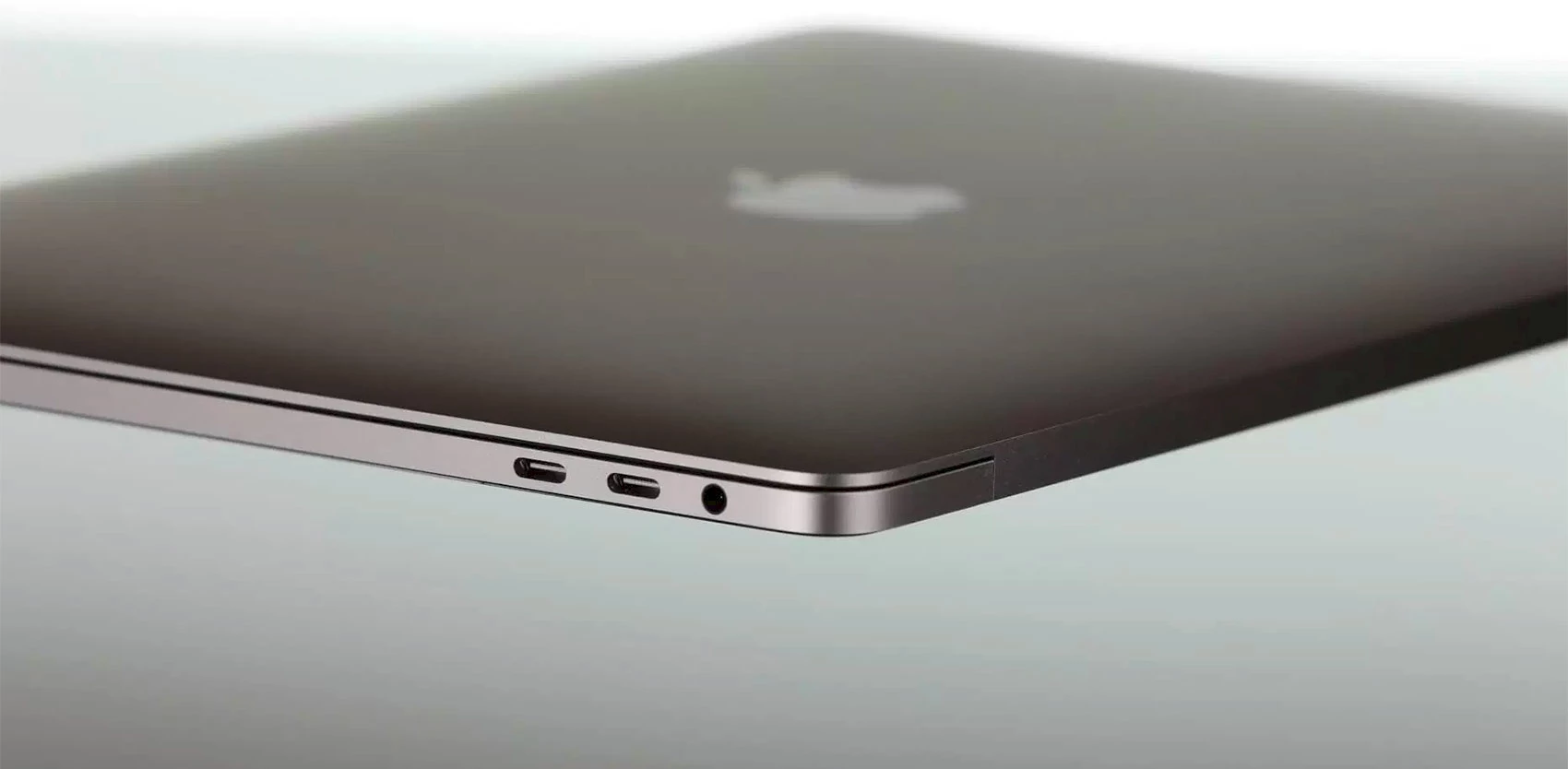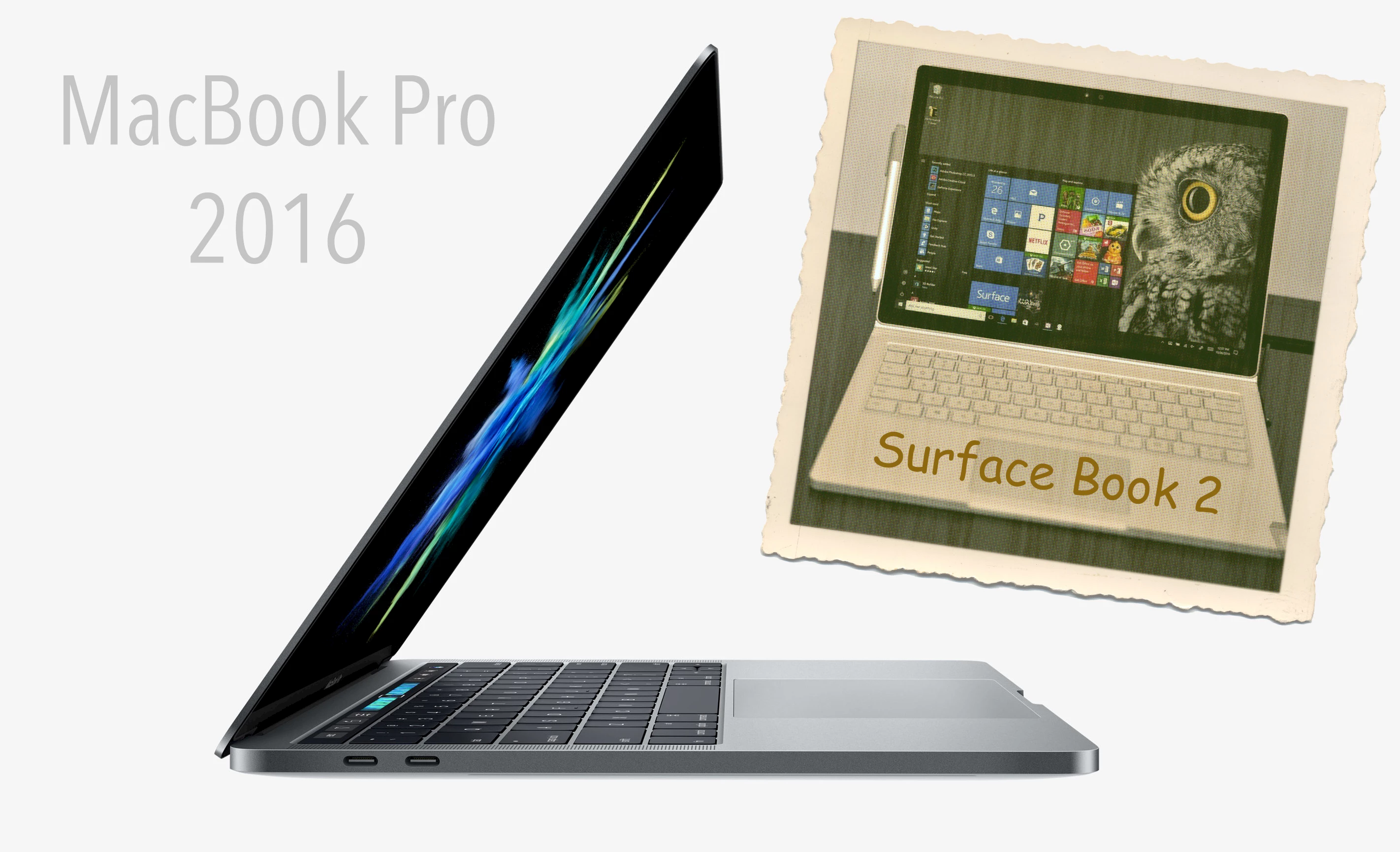The new MacBook Pro several years ahead of the new Surface Book

This week, Microsoft and Apple presented their respective visions of the future of computers, and more specifically of laptops.Microsoft first unveiled its new Surface Book 2, which is more powerful and has more battery. Apple, on the other hand, presented the new MacBook Pro, which is more powerful and has more battery. Oh, and a Touch Bar.
Aside from the Touch Bar, which you may or may not find useful, these laptops look more or less like minor evolutions of the previous versions. However, in terms of technology and vision of the future, there is a major difference between Apple and Microsoft. The Apple product is clearly an illustration of the laptops of the future, whereas the Microsoft offering is an example of the laptops of the past.
With the 2015 MacBook, Apple started the move toward the future of computers with the use of a single USB-C connector. With this latest MacBook Pro, Apple has confirmed this move by using exclusively Thunderbolt 3 USB-C connectors.
Why is USB-C the way of the future, and what’s in it for end-users?

USB-C is not just another USB connector, like Micro-USB or Mini-USB were. Instead, it is a completely new standard which replaces all the connectors you currently have on your old MacBook Pro, like:
- Standard USB: yes, for sure.
- Thunderbolt: USB-C is the standard connector for the new Thunderbolt standard.
- Display Port: MacBook Pro uses USB-C to replace the Mini DisplayPort.
- Power supply: The USB-C standard allows USB-C connectors to provide a lot of power (up to 100 watts) to run devices like computers, printers, etc.
So basically, USB-C replaces all of the following:
- DVI, DisplayPort cable
- Mini DisplayPort cable
- Micro DisplayPort cable
- Thunderbolt cable
- USB 1, 2 and 3 cable
- Micro USB cable
- Mini USB cable
- Proprietary power supply and connector
- Proprietary docking station cables (like this)
- And more, with only standard USB-C cables
And don't forget, USB-C is reversible.
Another way to look at it is this:
- MacBook Pro: 4 USB ports; Surface Book: only 2.
- MacBook Pro: 4 monitor connectors*; Surface Book: just 1 (Mini DisplayPort).
- MacBook Pro: 4 Thunderbolt ports; Surface Book: none.
- Plugging the MacBook Pro to a USB-C-compatible monitor will also charge it, leaving 3 USB-C ports available, while the Surface Book will require a power cable and a Mini DisplayPort cable to do the same thing.
With the MacBook Pro, any USB-C port can be used to charge the laptop, connect a monitor, connect any Thunderbolt or USB device.
Many people don't appreciate the move, afraid it will just create a dongle hell for Apple users. In fact, this is a courageous move made for the benefit of Apple users and, in time, all computer users, since computer manufacturers will probably follow Apple’s lead in the near future. So far, other manufacturers, including Microsoft, have continued to produce laptops based on technologies that are several years old. Apple is leading by example and pushing for quick change to shorten the transition period as much as possible. Since not all peripherals are USB-C compatible yet, it may be necessary to use dongles and adapters in the short term, making the transition a bit difficult. But this will not last long, and even PC monitors will eventually use USB-C connectors, making it possible to power your laptop while you work, using just one cable.
In just a few years from now, the MacBook unveiled this week by Apple will seem merely up-to-date, working seamlessly with all your new peripherals and sparing you the problem of multiple cables, adapters and dongles. The new Surface Book, on the other hand, and even the Surface Studio, neither of which have even a single USB-C connector, will look like an artefact from a prehistoric time when you were constantly trying to plug USB connectors upside down and rummaging through an assortment of cables for each one of your peripherals.

—
Note
(*) The 15-inch MacBook Pro supports simultaneously up two 5 displays : the built-in display at full native resolution (2880-by-1800, 220 dpi) and up to two external displays with 5120-by-2880 resolution (2x5K), or up to four external displays with 4096-by-2304 resolution (4x4K).
